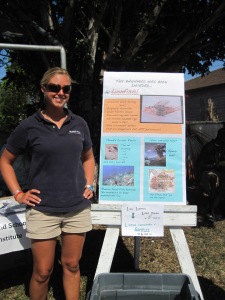[slideshow]
Sea turtles are on the endangered species Red List. The most common species of turtle found in the Bahamas is the green turtle, which we are studying. Previous studies in the Bahamas have included nutrition, grazing, growth rates, and abundance, but none have been conducted on Eleuthera. Our study is currently being conducted just north of Rock Sound in Half Sound, on the Atlantic side of the island. The purpose of our study is to investigate the abundance, size, and distribution of green sea turtles in Half Sound and our hypothesis is that areas with an abundance of sea grass will have dense turtle populations. We have two main methods that we’ve used so far in order to catch these turtles. The first is by boat, in which we take a small skiff to Half Sound. We ride Continue reading


